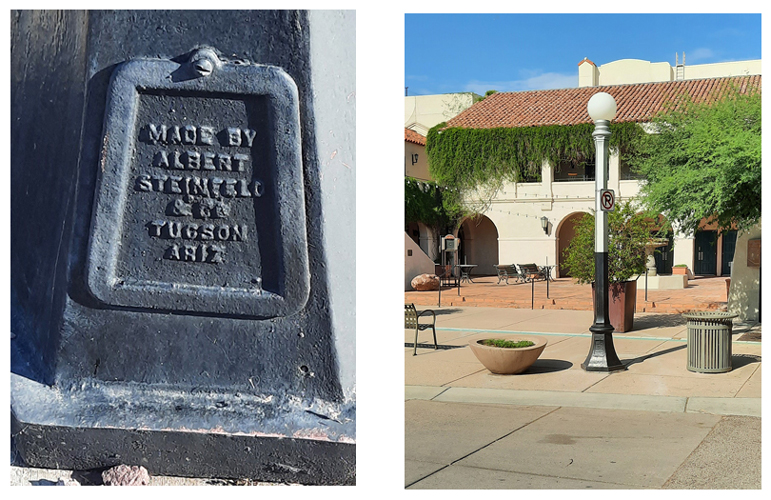 |
An Urban Exploration--Tucson's Historic Street Lights
 |
While out on a walk through one of Tucson's downtown area neighborhoods, the "Albert Steinfield & Co." name on the maker's plate of one of the street lights happened to catch my attention. I had done some study of this company several years ago after finding that same name cast in the metal framework of an old piece of mining machinery. Most people are familiar with Albert Steinfield's ownership of a large department store in downtown Tucson, but "Albert Steinfeld & Co" was so much more than that. It was actually a large "umbrella" company that was in control of quite a few subsidiary businesses. One of those was a machine shop and foundry operation that produced a variety of metal products. It was that part of the Steinfeld company that had manufactured the mine equipment I had found. So what was Steinfeld's involvement with the street lighting business in Tucson?
While looking for more information on the Steinfeld connection to street lighting, I came across this document, "Historic and Reproduction Street Lights in Tucson Arizona". Allison Diehl, the author, had researched the pre- 1940 history of electric street lighting in the city. She reported on the different kinds of street lights, the companies who had manufactured them, and the neighborhoods where the lights had been installed.
From the Diehl report, it seems that Albert Steinfeld was a major player in the early history of Tucson's street lighting. His company produced a majority of the lights that were installed prior to 1940. The street lights that were manufactured by the Steinfeld company were constructed of heavy cast iron at the company's foundry located on 17th Street, west of Park Avenue, near the railroad tracks. Several different styles of lights were manufactured. The neighborhoods where the lights were installed were in those areas that surrounded the commercial district of downtown Tucson.
These are examples of the different historical styles that were installed in the years prior to 1940. The street lights in these photos are authentic lights and are not reproductions. It was a fun challenge to walk the different neighborhoods to locate these.
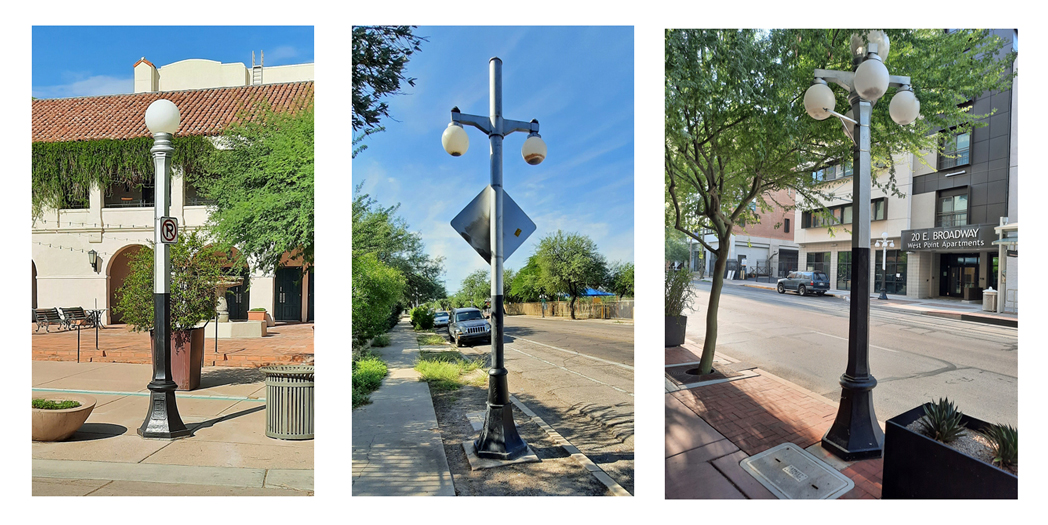 |
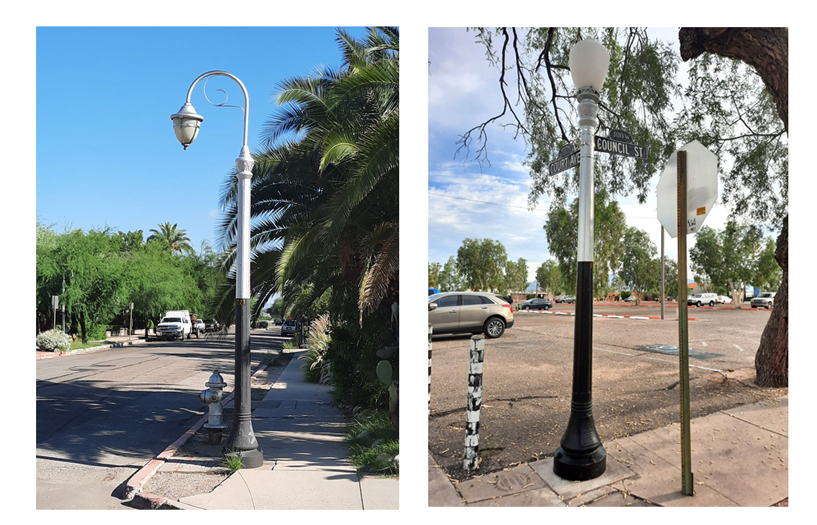 |
Hundreds of reproduction street lights have been installed since 1940. Manyof those were made from the original molds so they closely resemble the authentic lights. The reproductions were cast from aluminum or fiberglass. Ms. Diehl reported that none of the original glass fixtures of any of the street lights have survived to current times. All of those parts are reproductions.
It is the information that is on the access covers that is the best indicator whether a street light is an original or a reprodution. If the access cover reads "City of Tucson Tucson Arizona" or "Knight Foundry Tucson Arizona", the street light is a reproduction. The Knight Foundry was a metals fabrication company that was located on the south side of Tucson. It was in operation from the 1950s through the 1990s and produced many reproduction street lights. Other reproductions were manufactured in Mexico and elsewhere.
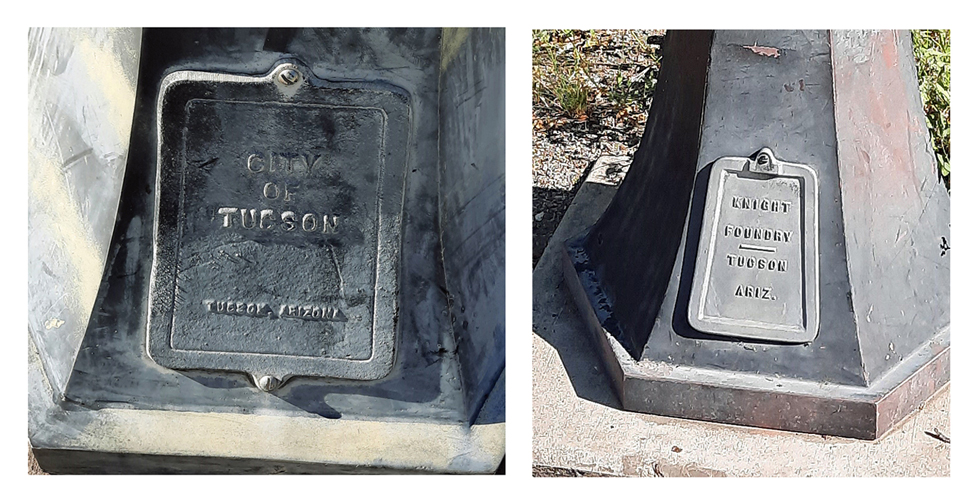 |
In the downtown commercial area, the majority of the 5-globe lights that are there today are reproductions. In the era of downtown re-vitalization, there was little effort made to preserve and re-use the original street lights.
In the 1980s, entire neighborhoods that were never outfitted with the original historic styles had hundreds of reproduction lights installed. Two areas that did not have original installations but whose streets are now lined with the reproductions are the Iron Horse neighborhood, and the Dunbar neighborhood. Fortunately, in some of the historic districts, original examples are still common. One of those is the El Presidio neighborhood.
These are the cover plates that were used on the original street lights produced by Steinfeld. Some have the Albert Steinfeld & Co. branding, and the others are labeled with the foundry's name "Tucson Iron Works". Locating actual examples of the historic maker's plates was a second challenge for me!
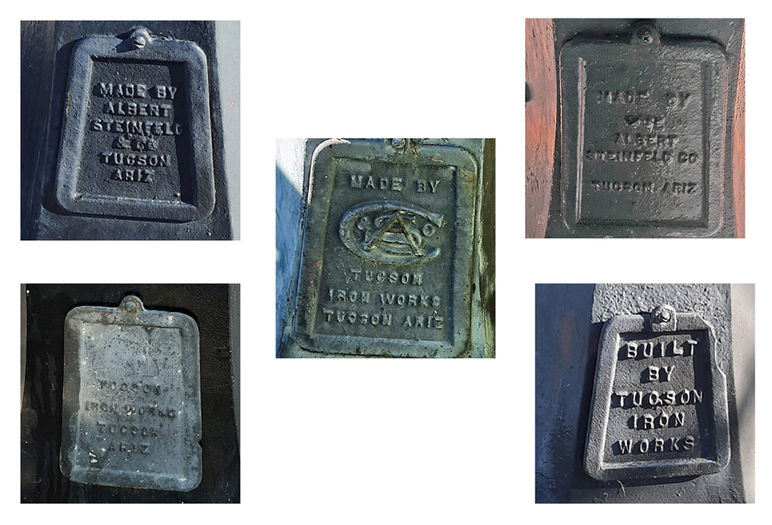 |
This is a particularly interesting example of an access plate that was attached to one of the Steinfeld lamp posts. Russell Electric Co. would evolve decades later into the Tucson Gas And Electric Company, the major supplier of natural gas and electricity to customers in Tucson. The light posts bearing this cover are located primarily in the El Presidio neighborhood.
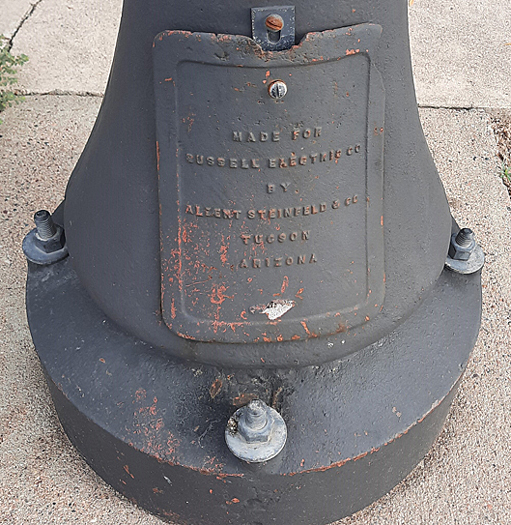 |
There was another street light manufacturer that was involved with the early street lighting of Tucson. The Union Metals Co. of Canton Ohio produced the street lights that are found on only one street--5th Street. Those street lights were very different in their construction. They were not manufactured from cast iron, but were constructed from rolled and stamped sheet steel.
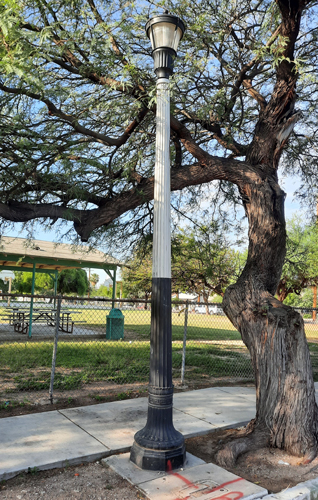 |
Less is known about a few other streetlights that are also from the pre-1940 era. Those lights have access covers that have the words "Tucson Arizona" cast into them. Diehl was not able to identify the manufacturer of those street lights. The cover plates that include the name of C.R. Taylor may have come a very small foundry operation owned by a Mr. Casimir Taylor. Taylor is thought to have operated in the mid 1920s. The street lights that carry his covers are very similar to those that were produced by Steinfeld.
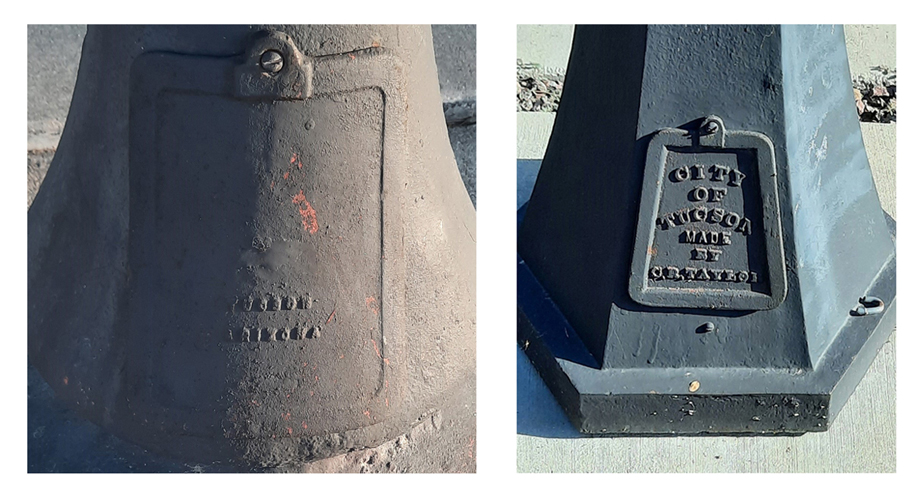 |
An interesting side bar to the story of the early street lights is the painting scheme used on the lights. In 1939 or 1940, a change was made to a two tone paint pattern of silver over black. Originally, the city's lights had been painted black. Vintage photos that have street lights in them can be dated as "pre 1940" or "post 1940" dependent on the paint scheme that is visible in the photo.